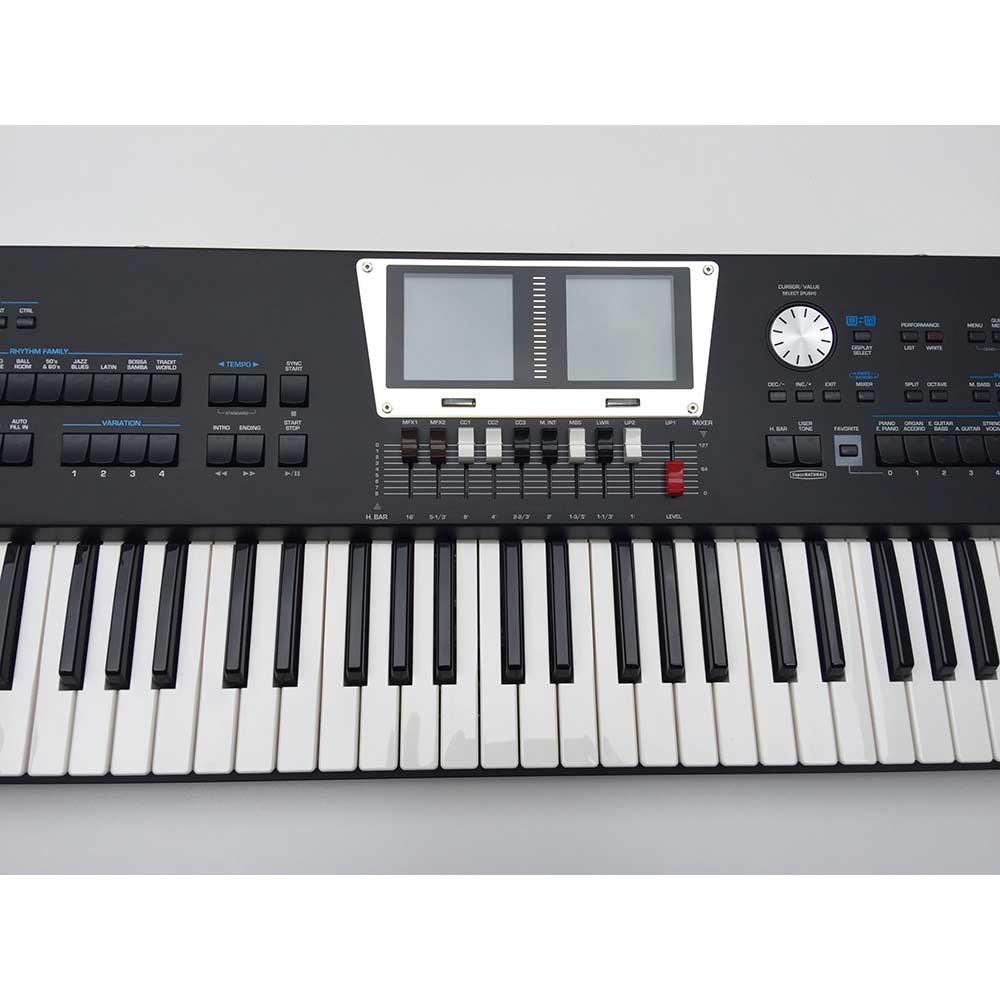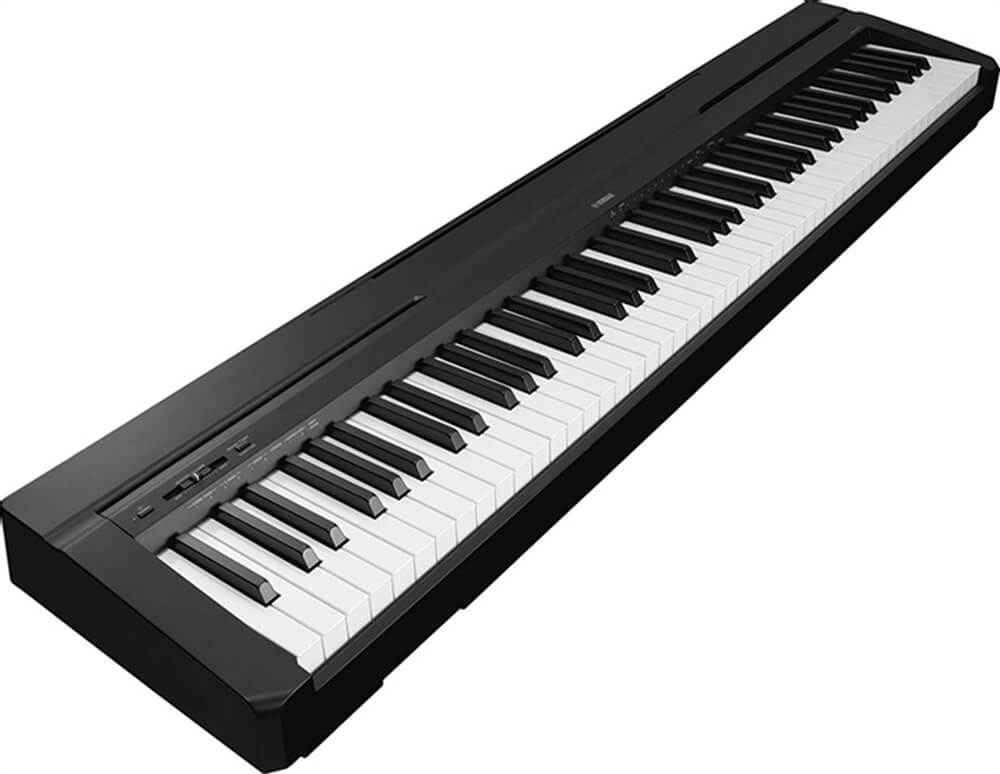Packed with versatile functions, a powerful sound system and a wide, 76-note, touch-sensitive keyboard, the PSR-EW300 is a smart choice for the piano beginner. (of a hard, wet, or polished surface) to reflect light in bright flashes 2. (of light) to be reflected in bright flashes 3. (usually foll by with) to be decorated or enhanced. Definition - yamaha ypg 625. All are then remixed and combined as separate voices with the XGlite technology, taking 130 voices and yielding 450. Dear friends, recently I have purchased the Yamaha PSR S500 arranger workstation keyboard. It is an awesome board and I love it's sound quality. But I need your help on XGlite voices. There are about 250 + Panel voices ( which can be accessed on the instrument itself ) and about 360 XGlite voices ( Which have been listed in the manual ). I am unable to understand how those XGlite voices can be.
Ideal keyboard for the beginner or advanced player, with 375 excellent true-to-life sounds, including the famous Yamaha Stereo Sampled Grand Piano, 12 Drum kits, 100 good accompaniment patterns and easy operation. The Yamaha PSR-E223 keyboard has 375 natural-sounding sounds, including Stereo Grand Piano, 361 XGlite voices, 12 drum kits and a sound effects kit. The PSR-E223 also has 100.
Let’s take a look at Yamaha PSR keyboards. We shall talk about beginner, intermediate and advanced models.
PSR keyboards are the most popular Yamaha keyboards. I guess this is mainly because of the fact that there are so many student and beginner models.
Some advanced models (PSR-S models) cost over a thousand dollars. These may not be the best ones for someone who is just starting out or who is on a budget.
As a beginner, you should probably check out cheaper models (PSR-E models) like the Yamaha PSR-E443 (price: $229.99), or the Yamaha PSR-E353 (price: $159.99). A young child would probably be fine with a basic keyboard like the Yamaha PSR-E253 (costs about $99.99).

When it comes to keyboards, it usually gets better with price. So budget is always a factor. If you’ve got more money to spend, check out the Yamaha PSR-S670 (price: $799.99).
These Yamaha PSR Keyboards Are Great For Intermediate or Advanced Players – PSR-S
PSR keyboards like the PSR-S770 and PSR-S970 cost about $1,299.99 and $1999.99 respectively. These are more advanced Yamaha PSR arranger workstations. They come with incredible features and are great for intermediate and advanced players.
For instance, the Yamaha PSRS710 has 128 note polyphony, 850 incredible instrument voices, realistic built-in accompaniment, a 16-track sequencer, audio recorder, large, easy-to read screen, dozens of effects and Internet Direct Connect and USB connectivity.
(Update: The PSRS710 has been discontinued. Get the PSR-S770 instead.)

The Yamaha PSRS910 features super articulation voices, sounds from the legendary Tyros3, MP3 playback, microphone input with 3-part harmony, color screen, 128 note polyphony, a 16 track sequencer, audio recorder, Internet Direct Connect and USB connectivity, and dozens of effects.
(Update: The PSRS910 has been discontinued. Get the PSR-S970 instead.)
Such arranger workstations are to be bought by intermediate or advanced players, particular those interested in musical arrangement.
These Yamaha PSR Keyboards Are Great For Beginners – PSR-E
It’s pointless spending so much money on a keyboard for features you are not yet ready to use. You’re better off with one of the cheaper Yamaha PSR keyboards.
Basic beginner keyboards like the Yamaha PSR-E353 and PSR-E443 come with a very important feature, the Yamaha Education Suite. With this feature, beginners learn how to play the keyboard.
What kind of other features can one expect in cheaper Yamaha PSR keyboards?
Let’s take a look at the Yamaha PSR-E323

(Update: The PSR-E323 has been discontinued. Get the PSR-E353 instead).
It comes with the following features:
– Touch Response: Expressive touch like a piano
– Back-lit display: Better information
– 12 Drumkits plus 1 Sound Effect kit with dedicated button
– Split (different voice on L&R) & Layer (2 voices i.e. Piano/Strings)
– Music Database: Automatic keyboard setups by song title
– 2-track sequencer: Record your own songs
– Yamaha Education Suite features Keys to Success function
– Flash ROM: Import Standard MIDI Files for listening or learning
– DSP effects include 9 Reverb and 4 Chorus
– Headphone jack
– MIDI In/Out
– Sustain Pedal jack
– Bass ports provide full sound
Let’s check out the Yamaha PSR-E423. Features of this Yamaha PSR keyboard include:
Yamaha Voices Free Download
(Update: The PSR-E423 has been discontinued. Get the PSR-E443 instead).
– 61-key Portable Arranger Keyboard
– Touch Response for added expression
– Built-in 6-track, 5-song sequencer with Easy Song Arranger
– Yamaha’s built-in Education Suite with chord dictionary
– Pitch bend wheel and optional sustain pedal jack
– 700 built-in voices — 183 Panel Voices, 462 XGlite Voices, 15 Drum/SFX Kits, and 40 Arpeggio Voices
– 32-note Polyphony
– 2 Control Knobs to adjust effects with your hands
– Reverb/Chorus effects plus Built-in EQ, Harmony/Echo Effects, and 150 Arpeggios
– 174 Accompaniment styles, including a number of World Styles
– 30 Preset songs built in (30 onboard, 70 on a CD-ROM you can load from a PC)
– Built-in 5W speaker system with enhanced bass response
The Yamaha PSR keyboards we have looked at all come with 61 keys. This is one factor to take into account when choosing the best keyboard for you. A grand piano comes with 88 keys. If 61 keys are not enough then you obviously have to look elsewhere. The good thing is that 61 keys are enough for the majority of beginners learning to play the keyboard. When starting out you may not need too many keys or octaves.
Yamaha Keyboard Sounds Download
All in all, these cheaper PSR-E models are very good keyboards for beginners, while more advanced players would want to spend some more for a PSR-S model.
Check out various Yamaha PSR keyboards here. Be sure to read the various reviews before deciding on what is right for you. Customer reviews go a long way in helping you make a choice. But the ultimate decision should be yours.
Yamaha Keyboard Buyer’s Guide Main Page:
Comments
Yamaha Xglite
comments
Polyphony on digital pianos is the maximum number of notes that a keybord can sound simultaneously. It can be 16, 32, 64, 128 or 256 notes. But how much is enough? This is a good question to ask when considering purchasing a digital piano. It doesn’t make a difference how good your digital piano sounds or feels if you continue losing notes amid play. So what’s the polyphony note mean you? Here’s how to make sense of it.
Factors to consider when thinking about polyphony on digital pianos
- What are you going to use the digital piano for?
If you require a digital piano that imitates an acoustic piano for basic practice purposes, then you’ll presumably approve of 32 note polyphony. In the uncommon case that you begin losing notes with manage pedal use you will be unable to notice it. Digital pianos use algorithms to figure out which notes to drop off if the maximum note number is come to. Periodically they will pick notes that could be dropped without the listener effortlessly taking note. So the awful news is if you achieve your maximum polyphony you will lose notes. The good news is that you may not take note.
- Sequencing and Layering
If you will record different tracks on your digital piano simply ahead and get a higher note polyphony. Each time you include another track top of an existing track, you are contributing to the greatest polyphony. The digital piano tallies the earlier track, and in addition your present playing, all toward the maximum polyphony. So if you begin including different tones and voices various tracks you can perceive how quickly you could achieve a maximum polyphony of 32 sooner or later in the song.
Likewise, if you get a kick out of the chance to use layering impacts an incredible arrangement, then get more than 32 note polyphony. The layering impact permits different voices/tones to play for each key stroke. If you have a fantastic piano and string impact on, each time you press a key it will use one note of your total polyphony for the fabulous piano tone and one note for the strings. This, one might say, parts your total polyphony check.
A Quick Note About Stereo
A portion of the tones/voices on a digital piano might be in stereo. This implies one note may have two different sounds recorded that play in the meantime to imitate the sound of an acoustic. At the point when this happens you are spending 2 notes of your polyphony for each key you hit, rather than one. This will in actuality transform a 32 note polyphony keyboard into a 16 note polyphony keyboard. This will only occur on those impacts that are in stereo, but most of modern digital pianos do have stereo notes soundes.
So, how much polyphony notes is enough?
To summarize, get a higher than 32 note polyphony. You can discover 64 or 128 note polyphony digital pianos at exceptionally moderate costs. There are also pianos with 256 note polyphony (for example Yamaha P-255 or P-515, or Casio PX-560), of course they are great, but they are for real perfectionists, you don’t have to hunt after them if you are just an amateur piano player.
If you are using your keyboard as a sequencer, then I also recommend buying a keyboard with a minimum 64 notes polyphony.
A Good Polyphony Test
Yamaha Xg Voices
If you are stressed over losing notes when utilizing the support pedal attempt this. Hit the two most reduced A notes on the digital piano. Hold them with the support pedal and do a glissando with both your hands. You shouldn’t lose the two low An’s if the digital piano uses a calculation to drop off a portion of the notes in the glissando. You presumably won’t notice you’re losing notes in the glissando. It’s ideal if you don’t lose the low A’s, but if you do lose them on your digital piano that is not the apocalypse.
